This article was written by COL (Ret) Larry J. Redmon, Global SOF Advisor.
It is part of our series on the Indo-Pacific Irregular Warfare Symposium.
See all blogs in the series.
The long-standing history of the US – Thai bilateral relationship is best described as a brotherhood–a relationship with roots in the Second World War. It fully began to develop into a true brotherhood during the 1950s and lasts until this day, standing as a testament to one of the longest enduring Special Forces relationships that the US has with any foreign nation.
Building a Lasting Relationship Since WWII
During WWII, the Kingdom of Thailand declared support to the Axis Powers…but the US did not declare war on Thailand. The Thai Ambassador to the US viewed the Thai declaration of war as illegal and refused to deliver it.
A great strategic move by the Thai Ambassador started a strong alliance that lasts until present day. This allowed cooperation for the US Office of Strategic Services (OSS) to form a resistance movement with the help of the Thai Ambassador and his contacts within Thailand.
Detachment 404 was formed by the OSS, drawing personnel from OSS Detachment 101, which was already active in India and Southeast Asia. Its purpose was to connect with the Thai Resistance, initiate operations against the Japanese in Thailand to liberate the country, and establish an underground network for rescuing and repatriating Allied pilots.
Eventually, OSS Detachment 404 helped the United States guarantee Thailand’s freedom, bring back its beloved King, and keep it free from aggressive colonial powers determined to make Thailand pay for its part in the war. This set the stage for a long-term presence by American Special Forces.
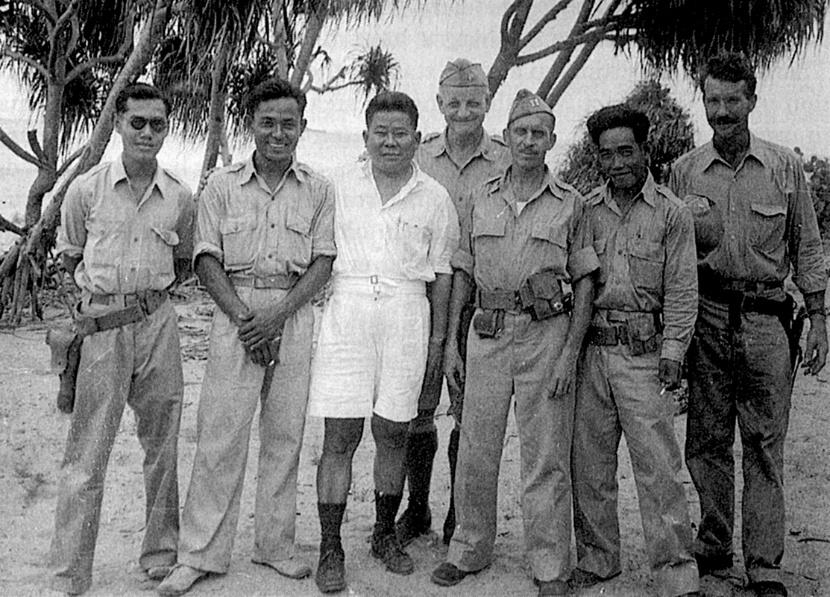
OSS 404 and Free Thai Circa 1944 Ceylon for training.
Establishing Collaborative Special Forces
Not long after World War II, communism began to spread throughout Southeast Asia and Chinese Communist movements threatened Thailand’s sovereignty in Thailand’s north and south.
As early as 1951, the precursor units of US Army Special Forces units arrived in Thailand on short term deployments to train, advise, and assist the Royal Thai Army. Primary tasks included creating effective paramilitary units, establishing Airborne, Ranger, and Special Forces units, and solidifying a professional brotherhood with consistent presence, relationships and an ever-growing respect among each other’s communities.
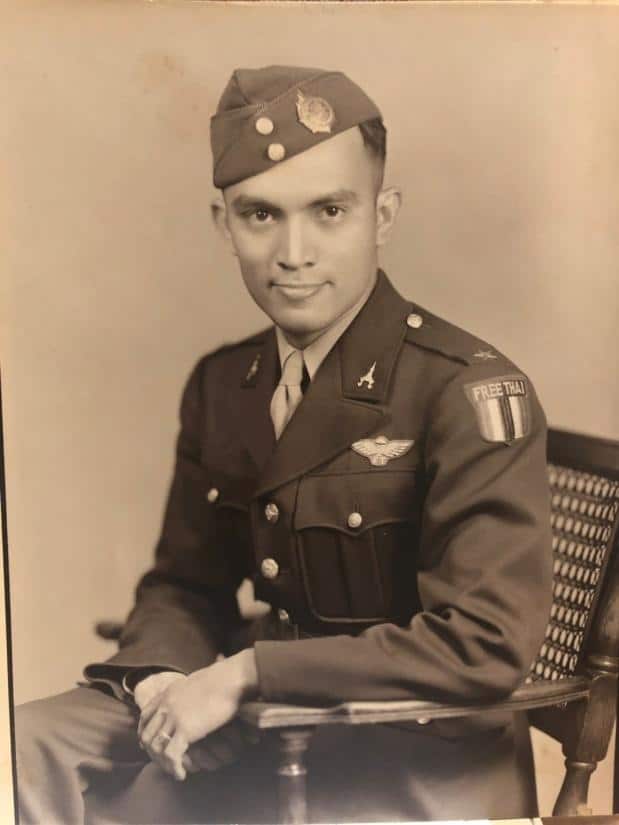
Air Chief Marshal Siddha Savetsila, as a Free Thai Sub-Lieutenant Circa 1946
The first such unit was a Special Forces Detachment from the 77th Special Forces Group led by LT Johnny Raymond, a WWII paratrooper and Ranger under the operational control of the US Army Pacific Command in Hawaii.
In May 1954, Lieutenant Raymond’s team arrived in Thailand and began training the first airborne and Ranger units for the Thai Army. Raymond later persuaded the King to establish Special Forces Units. Consequently, in 1956, one of the initial rotational teams to Thailand was led by Lieutenant Colonel Madding, a World War II special forces operative who had worked behind enemy lines in the Philippines during the Japanese occupation.
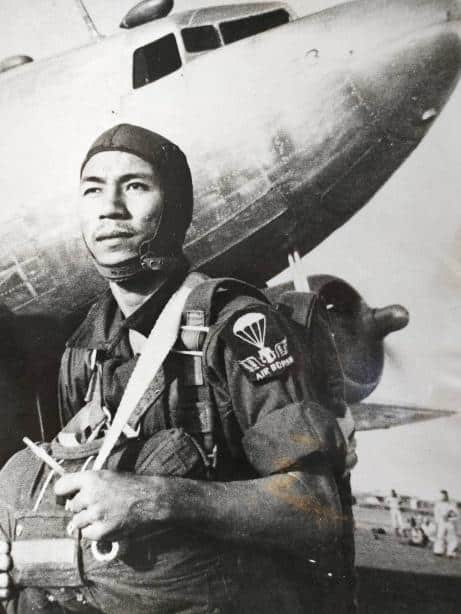
Camp Erawan Thailand, first airborne battalion circa 1951.
This lasted until 1966, when the first permanent US Special Forces unit–D Company, 1st Special Forces Group–arrived at Camp Pawai where it established its headquarters. This permanent presence of American Green Berets at the camp and in the surrounding community further endeared the Americans to their local counterparts…a sentiment still felt in Lopburi to this day.
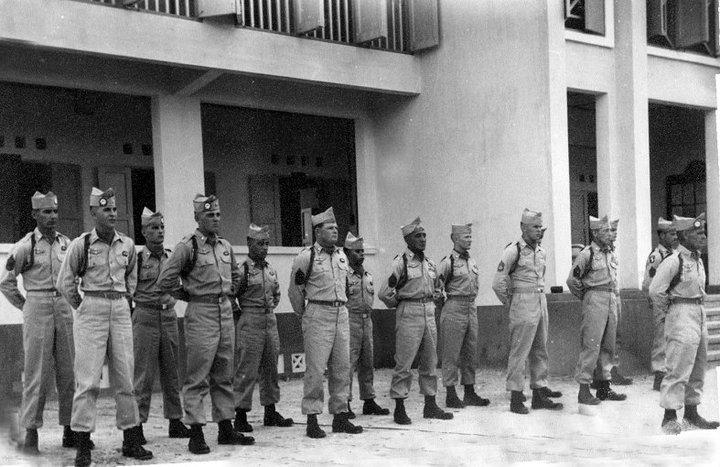
Special Forces Detachment from the 77th SFG, 1954, Camp Pawai, Thailand
Due to the significance and importance of D Company’s mission, the unit was given a special designation and new beret flash that signified its special relationship with Thailand – the unit’s designation was changed to the 46th Special Forces Company (D Company was also ODB-4600).
Over the next several years together, Thai and US Army Special Forces collaboratively built one of the finest fighting forces in Asia. Together, they faced off against communist terrorists and insurgents as far north as Nan, Chiang Mai, Chiang Rai and as far south as Trang, Laos and in Vietnam.
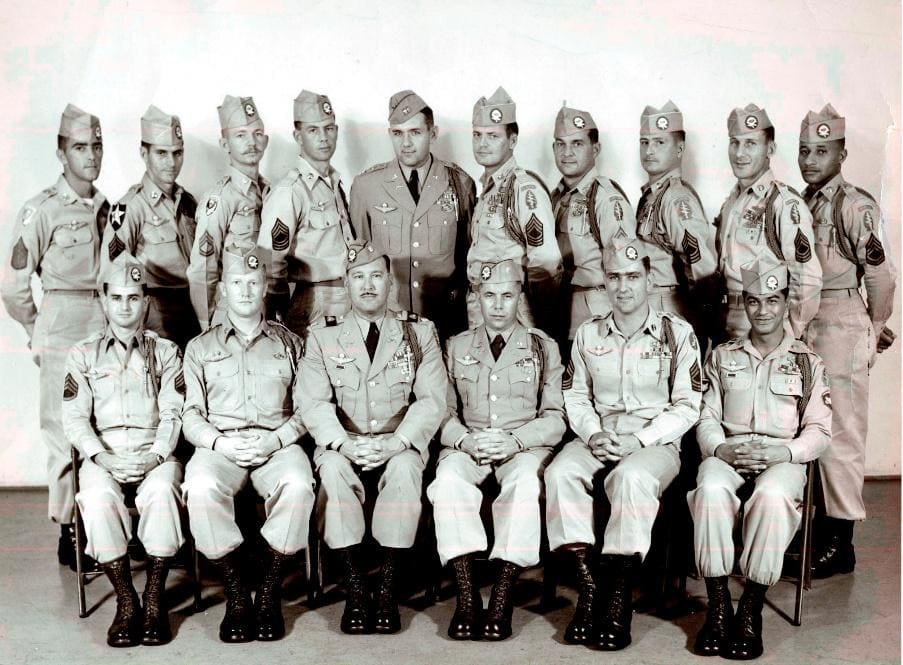
SFODA-14, Okinawa, Japan, 1956
Challenges to the Brotherhood
In the 1960s and 1970s, owing to an increasing communist presence in Laos and a threat to democracy in the Kingdom of Thailand, Thai Special Forces, the 46th Special Forces Company with the Royal Thai Border Patrol Police’s (BPP), Police Aerial Reinforcement Unit (PARU), and the CIA began to covertly form and train Special Guerrilla Units (SGU) under the Laotian General Vang Pao.
The charismatic Hmong leader brought hundreds of his people to Thailand under the watchful eye of US Special Forces, PARU, CIA, and Thai SF for training and equipping in camps throughout Thailand. Once trained and evaluated, the SGUs, accompanied by Thai and American advisors, conducted combat operations in Laos against communist Lao and Vietnamese forces.
These operations lasted until 1970 when the Hmong were on their last legs against an ever increasingly and more adept communist force armed, equipped, and supported by Vietnam.
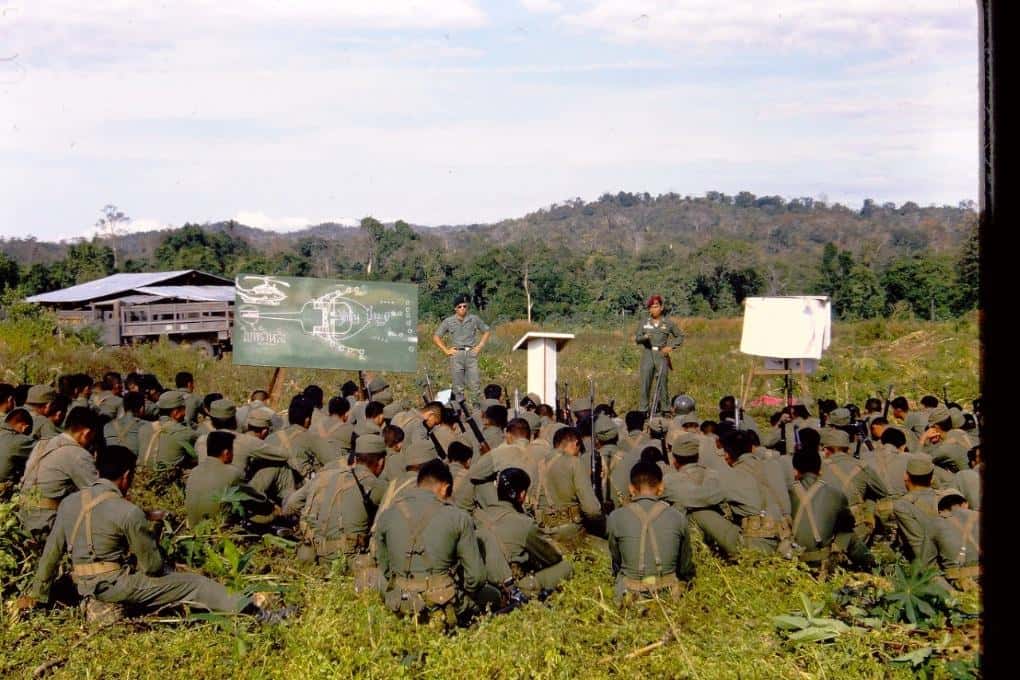
D Co, 1st SFG, Camp Nong Nakoo, Thailand, 1966
Thai and US Special Forces also trained Cambodia Special Forces in 1971 at Camps Narai and Erawan in Lopburi. Khmer Special Forces received specialized training in guerrilla warfare and tactics, airborne, and medical response. The PARU also trained Khmer units at Hua Hin–this training was short-lived and ended in July 1972.
The 1973 Paris Peace Accords and the end of the Vietnam War seemed to signal a close to the deep professional and personal brotherhood that had developed over many years between the US and Thai Special Forces.
In 1972, the 46th Special Forces Company formed the 3rd Battalion, 1st Special Forces Group (Airborne) began to withdraw its forces from Thailand in 1974 to Okinawa, Japan.
Many Senior Thai officers, provincial officials and local families among the Thai community came to see their American family off as they cased the colors on the parade field at the Headquarters of the 46th Company, 1st Special Forces Group–then known as Camp Gumbs and today known as Camp Narai. In 1974 at Okinawa, Japan, the 1st Special Forces Group subsequently deactivated for ten years until its reactivation at Fort Lewis, Washington in 1984.
The brotherhood took a ten year pause, but was not forgotten.
Building to Today’s Partnership
Large scale mil-to-mil exercises and relations between the US and Thailand returned in 1982.
US Pacific Command (USPACOM) organized a bilateral exercise called Cobra Gold, held between the US and Thailand. This became a venue for increased Special Operations participation and reestablishing the age-old friendship with Thai Special Forces brothers.
It would be another two years before US Special Forces returned in great numbers, but the 1st Special Forces Group (reactivated in 1984) has not only participated in Cobra Gold full-force every single year since, but also created other venues for engagement such as bilateral exercises, training venues, joint deployment, and various types of security assistance missions and exercises.
This is all intended to enhance, professionalize, and make the two Special Operations Forces entities the best in the world… and the brotherhood as strong as it has ever been.
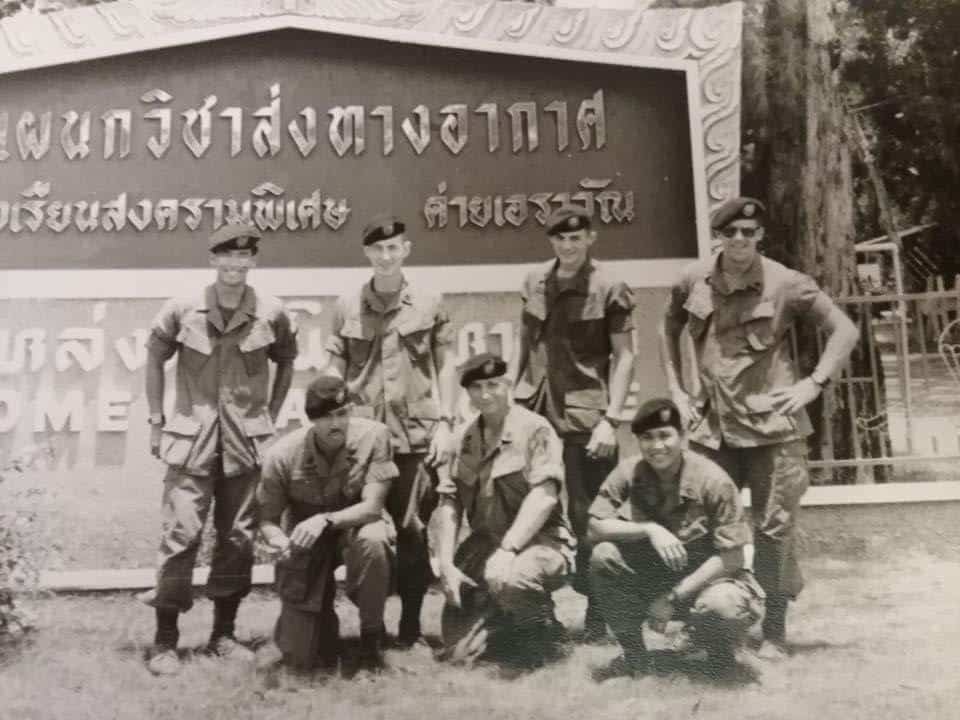
ODA members of A Co, 3rd Bn, 1st SFG, Camp Erawan, Thailand 1986
Today, Thailand has a world class fighting force.
This was more than evident when the Kingdom supported the United States during the Global War on Terrorism by sending troops to support operations in Iraq and Afghanistan, becoming the first Asian country to come to the aid of the United States after the attack on sovereign American soil on 9/11.
Thailand also allowed US units to come to Thailand and gain valuable insights and experiences from Thai Special Forces, who spent years operating in the south of Thailand against insurgents. Side by side, Thai and US Special Forces trained prepared for combat operations, continuing the brotherhood and close-knit friendship few have the honor of ever experiencing.
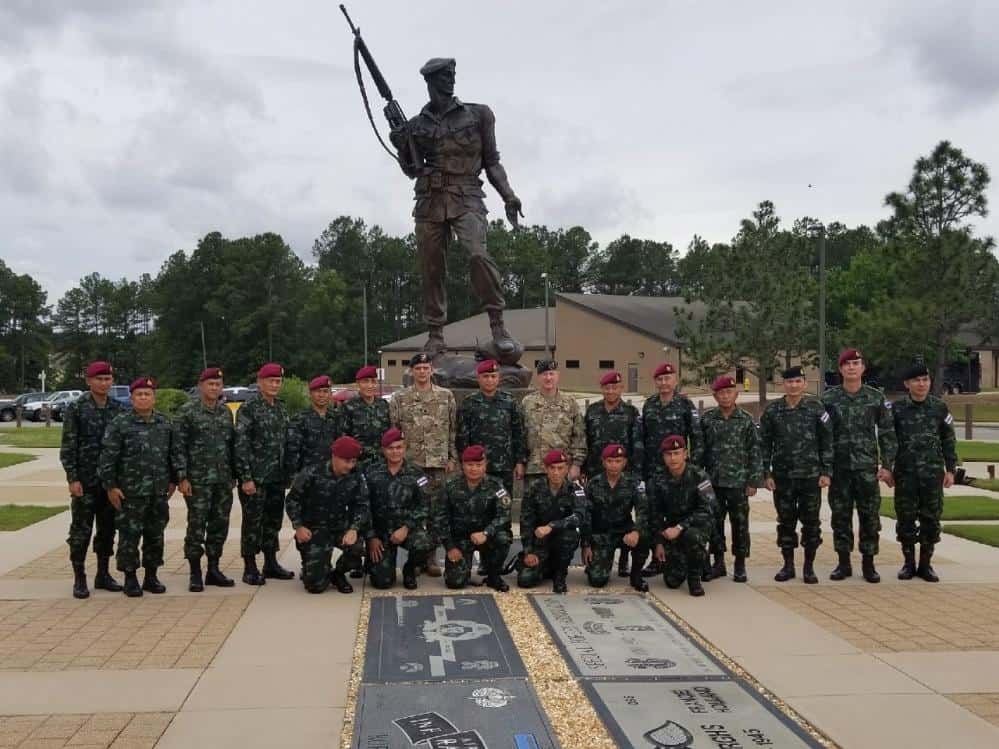
Commander and Staff from the Thai SWCOM, Ft Bragg, NC 2018
War is not the only time that Thai and US Special Forces relationship worked side by side. Together, during the 2004 tsunami, US and Thai Special Forces halted their training exercises, deployed additional assets, and began immediately assisting their Royal Thai Army and Navy brothers in supporting the people of Thailand. In every major calamity occurring in Thailand, US Army Special Forces have assisted Thailand.
The brotherhood between Thai and US Special Forces has endured for over 80 years. This permanent bond was forged through shared sacrifice, with American and Thai OSS members killed in action in Thailand during WWII, and both Thai and US Special Forces soldiers dying during Thailand’s communist insurgency. Additionally, hundreds of Thais lost their lives supporting American operations in Korea and Vietnam, and Thailand suffered casualties while supporting the US in the Global War on Terror.
Here and now in the 21st century, the bond of friendship between Thai and American Special Forces soldiers forged in peace and wartime continues to grow. On 7 April 2019, the Royal Thai Special Warfare Command, formally recognized this special relationship and dedicated the “Thai-US Special Forces Brotherhood Monument,” located on Camp Pawai in Lopburi, Thailand.

Thai-US Special Forces Brotherhood Monument, Camp Pawai, Lopburi, Thailand.
Be a Part of the History
Register for the Indo-Pacific Irregular Warfare Symposium to participate in conversations focused on these topics and more…


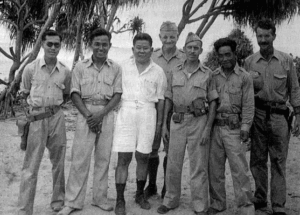
Leave a Reply